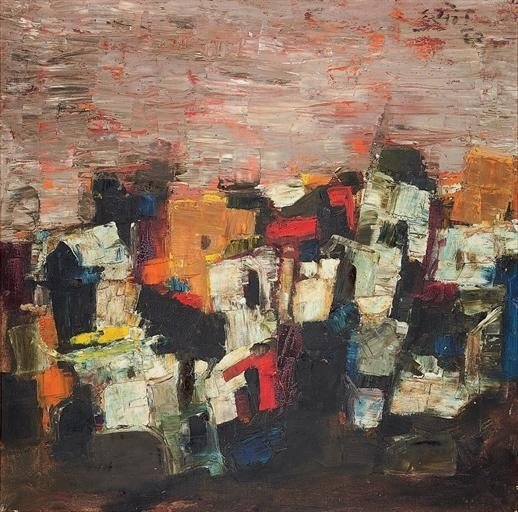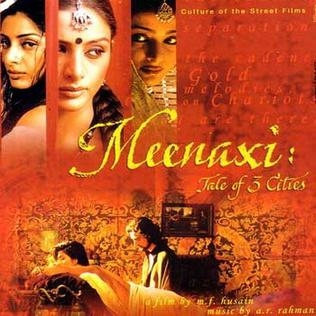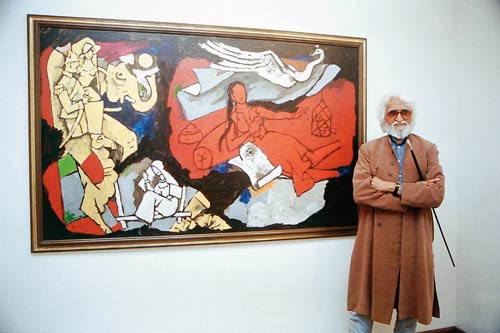MF Hussain, The Picasso of India
MF Hussain, The Picasso of India, is known for executing bold and vibrant coloured narrative paintings in a modified cubist style. Although he courted both fame and stirred controversy for his erotic portrayal of Hindu deities and "Bharat Mata", he was one of the most celebrated and internationally recognised artist of the 20th century. His premature association with the Bombay Progressive Artists' Group mainly focused on using modern technique which was inspired by the 'New India' after the partition of 1947. His narratives executed in a modified cubist style, can be caustic and hysterical as well as significant and sombre. His themes sometimes treated in a series included diverse topics like Gandhi, Mother Teresa, The Ramayana, The Mahabharata, The British Raj and motifs of Indian urban and rural life. His painting titled "voices" got auctioned for a record of $2.5 million in September 2020. In 1967, he received the National Film Award for Best Experimental film for "Through the eyes of a Painter".In 2004, he himself directed meenaxi: A Tale of Three Cities, a film he worked on with his artist son Owais Husain, which was screened in the Marchè du film section of the 2004 Cannes Film Festival.
By the early 1930s,while the silver screen was flourishing with as many as two hundred films per year, the advertising market was sorely in need of high quality painters. Husain used this opportunity to take care of his daily needs, gradually he commenced his painting career as a painter of cinema hoardings. He even went ahead working for a toy company, where he designed and made some innovative toys. He was also in touch with his mates from sir J.J. School of Art and was lingering for the right juncture to contribute towards the evolution of Indian art.
Formation of the Progressive Artists’ Group:
M. F. Husain and his friends from Sir J. J. School of Art wanted to break the age-old tradition of the Bengal school of art. They knew that in order to take Indian art to the world stage, they had to encourage artists to embrace modernism. Husain saw the partition of 1947 as an opportunity to start a movement as many innocent lives were lost during the partition of Indian and Pakistan. Claiming that a ‘new India’ was born out of the partition, Husain and his friends urged their fellow artists to embrace new ideas and hence, The Progressive Artists' Group, which they formed in 1947, became a force to reckon with. Soon, the movement gained recognition and the group grew in strength, which ultimately became a turning point in the history of Indian art.
Career and controversies:
Husain first exhibited his art works in Zurich in the year 1952 and then went on to display his works in the US for the first time in 1964. Though Husain enjoyed fame and respect during the initial phase of his career, a large portion of his painting career was mired in controversies. More often than not, various Hindu nationalist groups targeted him for hurting religious sentiments. In 1996, a Hindi monthly magazine named ‘Vichar Mimansa’ published some of his controversial paintings that were created in the 70s. The paintings that depicted nude Hindu goddesses earned the wrath of many Hindus and Hindu organizations and subsequently eight criminal complaints were lodged against Husain. Two years later, many of his paintings were vandalized and his house attacked.
In 2006, he was charged again for hurting the sentiments of people for coming up with a nude portrait of Bharatmata (Mother India). The painting was forced to be withdrawn from various auctions and an apology from Husain was demanded. However, the painting was later sold at an auction for Rs 80 lakh. Eventually, Husain started receiving death threats from various powerful organizations and he was left with no other choice but to leave India. The controversial painting by MF Husain known as Bharat Mata (Mother India), though the artist maintained that the title did not come from him.
Husain’s Stint with Movies:
Hussain made his filmmaking debut in the year 1967, when he came up with ‘Through the Eyes of a Painter’. The film was showcased at the prestigious Berlin International Film Festival and also won the Golden Bear short film award.
Husain was a great admirer of actress Madhuri Dixit and even considered her as his muse. In 1997, he made a cameo appearance in the film ‘Mohabbat’, which had Madhuri Dixit playing the female lead. Madhuri played an artist in the film and the art works displayed throughout the flick was contributed by Husain himself. In the year 2000, he made a film titled ‘Gaja Gamini’, which had Madhuri in the lead. The film spoke about womanhood and was intended to pay tribute to Madhuri Dixit.
In 2004, he made a film titled ‘Meenaxi: A Tale of Three Cities’, which had actress Tabu in the lead. This film too, faced several controversies as some Muslim organizations claimed that one of the songs featured in the film was blasphemous in nature. The film was instantly pulled out of cinemas but went on to achieve critical success.
Recognition:
The Government of India appointed Husain to a term in the Rajya Sabha, in recognition of his contribution to art. The Jordanian Royal Islamic Strategic Studies Centre released a list of 500 most influential Muslims in the world and Husain was a part of it. Many of his paintings are widely appreciated in Europe and the USA, and his art works are displayed in several museums throughout the world.
Legacy:
One of M. F. Husain’s greatest legacies is his efforts to take Indian art to the world stage by modernizing the art in the country. He emphatically succeeded in doing so as many modern artists from India, born out of the Progressive Artists' Group, went on to rock the world stage. Also, Husain’s legacy is being carried forward by his son Owais Husain, who is an eminent artist in his own right. The autobiography of M.F. Hussain is being made into a movie, which has been tentatively titled as 'The Making of the Painter'.
~Udita Dey









Comments
Post a Comment